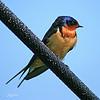
bioNRICH
bioNRICH is the area of the stemNRICH site devoted to the mathematics underlying the study of the biological sciences, designed to help develop the mathematics required to get the most from your study of biology at A-level and university.

Mathematical Issues for Biologists


Core Scientific Mathematics

chemNRICH
chemNRICH is the area of the stemNRICH site devoted to the mathematics underlying the study of chemistry, designed to help develop the mathematics required to get the most from your study of chemistry at A-level and university.
Discuss and Choose
This activity challenges you to decide on the 'best' number to use in each statement. You may need to do some estimating, some calculating and some research.

Big and Small Numbers in the Living World

Terrariums
Build a mini eco-system, and collect and interpret data on how well the plants grow under different conditions.
Maths is Everywhere!
Big and Small Numbers in Biology
Work with numbers big and small to estimate and calulate various quantities in biological contexts.
Alternative Record Book
In which Olympic event does a human travel fastest? Decide which events to include in your Alternative Record Book.
Ratios and Dilutions
Robot Camera
Packing 3D shapes
What 3D shapes occur in nature. How efficiently can you pack these shapes together?
Dilution Series Calculator
Which dilutions can you make using 10ml pipettes and 100ml measuring cylinders?
Disease Dynamics - Understanding the Spread of Diseases

Population Dynamics - Part 4
Branching Processes and Extinction

Population Dynamics - Part 6

Population Dynamics - Part 5
Catalyse That!
Chi-squared Faker
Reaction Types
Population Ecology Using Probability
Stats Statements
Are these statistical statements sometimes, always or never true? Or it is impossible to say?
Drug Stabiliser
Whose Line Graph is It Anyway?
Which line graph, equations and physical processes go together?

Bird-brained

Predator - Prey Systems
Genetic Intrigue
Why Multiply when You're About to Divide?
Graphic Biology
Is your DNA unique?
Use combinatoric probabilities to work out the probability that you are genetically unique!
Real-life Equations

Population Dynamics - Part 3

Population Dynamics - Part 2

Population Dynamics - Part 1

Population Dynamics Collection
Blood Buffers

